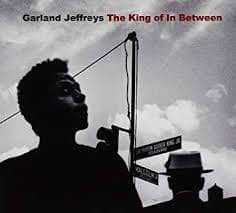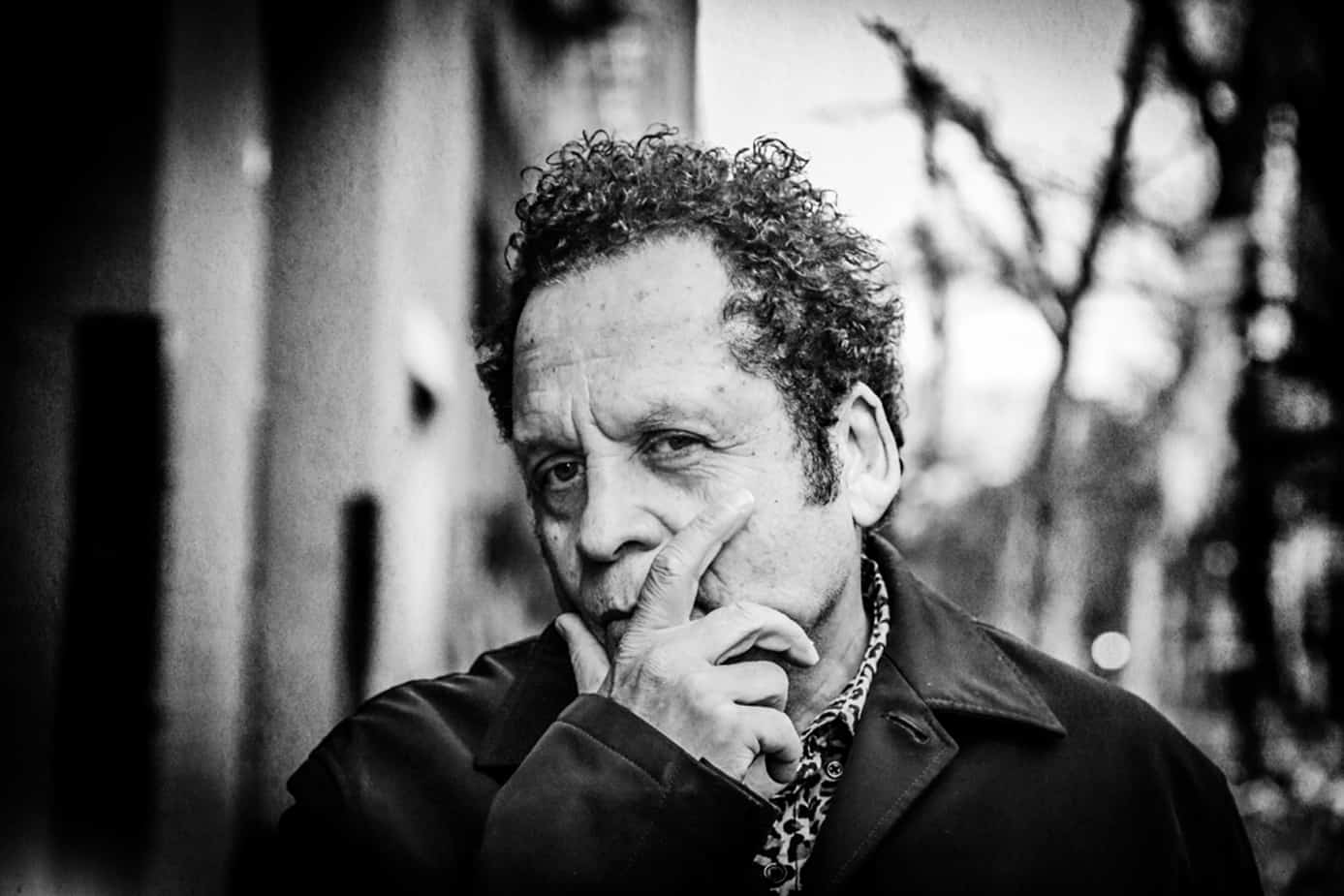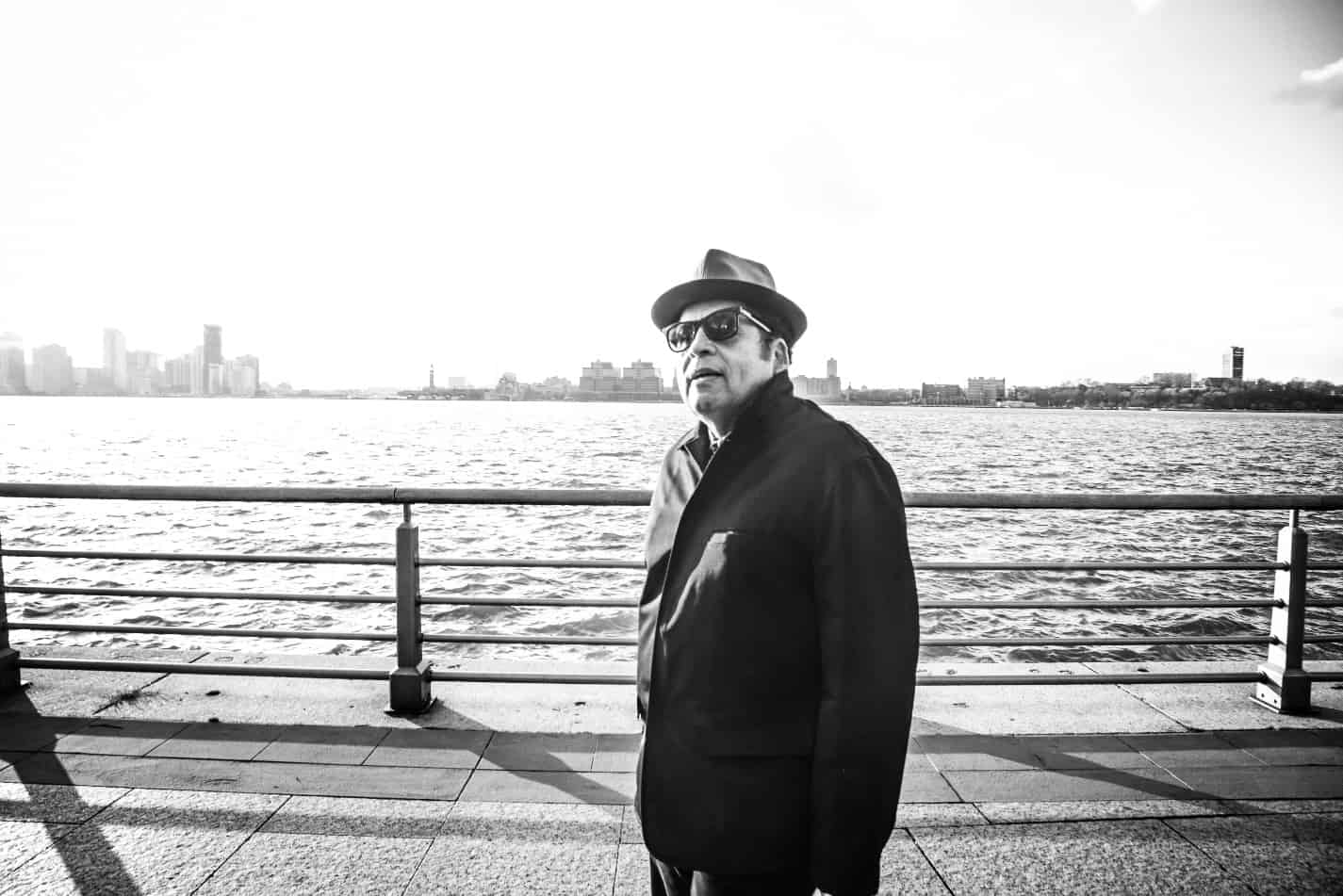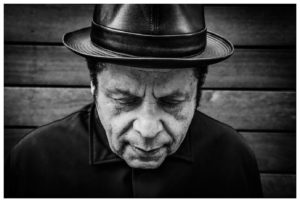Garland Jeffreys, the Brooklyn born rock and roll singer and songsmith, is hanging up his spurs. His retirement, hopefully an opportunity for him to relax with his family and enjoy the rest of his life, is our loss.
I know Garland Jeffrey’s music very well, having stumbled upon his records perchance somewhat earlier on (for me at least) in his recording career. The first song of his that I remember hearing was called “Scream in the Night” (1978). He wrote:
“I miss New York City baby,
I miss the Sheik and Spanish Joe
Violence it ain’t that pretty
But that’s the place to go
For a scream in the night…”
I thought now here’s a bloke who wants to paint the city landscape. And just who were the Sheik and Spanish Joe? So, it seemed like Garland Jeffreys had a special relationship with where he lived and he had meaty stories to tell about it all. Even though “Scream in the Night” is actually about Los Angeles, the reference to New York is his cornerstone. Garland never forgot his roots.
 Much later on in 2011, he released an album entitled The King of In Between. On the cover, he is photographed standing at the intersection of Malcolm X Boulevard and Martin Luther King, Jr. Boulevard in Harlem (Lenox Avenue and 125th Street). His demeanor is not confused, but questioning, a wee bit curious or not too sure. That Malcolm X and Martin Luther King Jr. had differing views on how to change America for the better and forever is well documented. How to accomplish that transformation and build the new society is still the burning question for this current society. Garland Jeffreys has every right to look for the answers. This was another cornerstone marking out his territory, his city. A difference of thirty-three years spanned both productions. And Garland is still here.
Much later on in 2011, he released an album entitled The King of In Between. On the cover, he is photographed standing at the intersection of Malcolm X Boulevard and Martin Luther King, Jr. Boulevard in Harlem (Lenox Avenue and 125th Street). His demeanor is not confused, but questioning, a wee bit curious or not too sure. That Malcolm X and Martin Luther King Jr. had differing views on how to change America for the better and forever is well documented. How to accomplish that transformation and build the new society is still the burning question for this current society. Garland Jeffreys has every right to look for the answers. This was another cornerstone marking out his territory, his city. A difference of thirty-three years spanned both productions. And Garland is still here.
As an aside, Garland Jeffreys was born in 1943 of black American and Puerto Rican heritage. He was in his prime during the heyday of the Black Panther Party and the Young Lords, nation-wide resistance organizations from those particular communities that bore some indirect relationship to the street gang ethos. Garland certainly would have been aware of their existence.
Then there was the 1977 re-release of his single “Wild in the Streets”:
“We got a gang called Shady
And a Midnight Lady….”
From my listening chronology, which was now going backwards rather than forwards, his gang has graduated from the Sheik and Spanish Joe to also include Shady and the Midnight Lady. While Garland Jeffreys wrote this song almost two decades before Mayor Rudolph Giuliani unleashed his Zero Tolerance blitzkrieg, the artist could see something sinister coming our way, like a massive storm brewing out in the Atlantic Ocean and slowly heading landwards, intent on making serious trouble:
“…With your newspaper writers
And your big crime fighters
You still need a drug store
To cure my buzz”
There’s a bit of the 1979 Walter Hill film The Warriors to be found here, more than a bit maybe. Perhaps the song is a reminder of the Cyrus character in the movie, a gang honcho who addresses the entire assembly of the assorted gangs from all five boroughs. Now Shady and the Midnight Lady and the Sheik and Spanish Joe might not be the Van Cortland Park Rangers, the Gramercy Riffs, the Moon Dogs, or the Saracens, and Cyrus might have been pulling off his best Benito Mussolini impersonation, perhaps the pinnacle of his professional acting career, but he was definitely onto something. Presenting an alternative to the city’s popo and justice system, Cyrus too understood the territory issue…” Secure our turf one block at a time, because it’s all our turf. Can you dig it?”
Bear in mind, the Warriors had to battle from the Bronx all the way back to Coney Island where they lived. Garland Jeffreys was born in Sheepshead Bay, right around the corner from Coney Island. He made his home in that neighborhood and has lived there all of his life. He attended the big basketball academy Abraham Lincoln High School, of which the NBA star Stephon Marbury is an alumnus. Garland’s other school or college mates were Lou Reed and the actor, Harvey Keitel.
In the film The Warriors, the protagonists are getting whittled down fast. As the surviving members finally limp off the train at the Brighton Beach station, the camera slowly pans over Coney Island at early dawn. The picture is not a pretty one. We see the projects, the public estates, and the rows of houses with cold water, submarine apartments. The carnival is closed up and empty, surrounded by high razor-wire fencing and gates with padlocks. The streets are deserted. It all looks rather grim and bleak. Swan, the war chief, wearily stares out at this foreboding vista and says, “This is what we fought all night to get back to.” This is a statement not a question.
Much has changed between 1979 and now, but on the 2011 album The King of In-Between, Garland Jeffreys took on his own hood and how he saw things there with the opening song of his record, a track entitled Coney Island Winter:
“…Politicians kiss my ass
Your promises they break like glass
Twenty-two stops from the city…
All the games are broken down
Rust is fallin’ to the ground
They say they’re going to fix this town
Straight from City Hall
Coney Island winter…”
His sentiments really don’t differ too much from those of Swan. Since the early 2000s, Garland’s band has gone under the name “The Coney Island Playboys.”
A few months ago, I attended a small intimate house concert in Windsor Terrace, Brooklyn. The performers were Garland Jeffreys accompanied by two musician associates of his. Garland played a composition that night that we knew wasn’t on any of his records. It was entitled “Nothing Big In Sight.” One of his pals told us that it was only ever recorded as a session for a music television show from the 1970s called Soundstage. It was a haunting song and I found it on YouTube the next day. His guest on the song was the jazz saxophone legend Sonny Rollins. Search Garland Jeffreys and Sonny Rollins on YouTube and you’ll find it. Sonny Rollins fer chrissakes! This is Mr. Saxophone Colossus, the Tenor Madness man, the player who blew his horn late at night on the Williamsburg Bridge, and a sidekick of John Coltrane to boot. Sonny Rollins is royalty in the world jazz community. And here he is on stage with Garland Jeffreys. Now that’s impressive.
 The song is another Garland Jeffreys homage to his city. When the video is not filming the band’s performance, the camera follows an extremely young and handsome Garland Jeffreys wandering passed the bodegas and the street vendors, doing his flaneur thing. He could be in Spanish Harlem, or in Washington Heights, or on the Lower East Side. The full whammy is on display, he’s schmoozing with the residents, the store counter guys, the three-minute chess match contestants, and all who make their living off the streets by providing affordable goods, food and drink or entertainment for sale to the local neighbors. The cars are period pieces, those gigantic boat-sized Motor City machines with belligerent names a la Chrysler Battle Wagons or Plymouth Tarantulas. Of course, the outfits and the haircuts are so much cooler than the latest hipster garb. And then there’s Sonny Rollins providing the horn melody. It’s quite a remarkable piece of work.
The song is another Garland Jeffreys homage to his city. When the video is not filming the band’s performance, the camera follows an extremely young and handsome Garland Jeffreys wandering passed the bodegas and the street vendors, doing his flaneur thing. He could be in Spanish Harlem, or in Washington Heights, or on the Lower East Side. The full whammy is on display, he’s schmoozing with the residents, the store counter guys, the three-minute chess match contestants, and all who make their living off the streets by providing affordable goods, food and drink or entertainment for sale to the local neighbors. The cars are period pieces, those gigantic boat-sized Motor City machines with belligerent names a la Chrysler Battle Wagons or Plymouth Tarantulas. Of course, the outfits and the haircuts are so much cooler than the latest hipster garb. And then there’s Sonny Rollins providing the horn melody. It’s quite a remarkable piece of work.
The potential liberated zone is on these streets. Ownership is being proclaimed not by landlord-issued leases or by bank mortgages. It is being asserted by the very people and by the very institutions they have created that breathe life into the big city. The New York author Joseph Mitchell once wrote “many writers have got into the habit of calling these folk ‘the little people.’ There are no little people in my book (Up In The Old Hotel). They are as big as you are, whoever you are.” Garland Jeffreys understood this profoundly.
If we try and focus on the things that matter then the meaningless shit might occupy less space. This is a hard row to hoe because there is no doubt an unlimited supply of garbage. Often, it is dressed up so as not to seem as it really is. Garland Jeffreys matters. He created a powerful body of work through his music, with no pretense. This should never be forgotten, not in his land.
“Take away my troubles
And put ’em in a trunk
Dump ‘em in the river
And when the trunk is sunk
Clear the air of all concerns
Start everything anew
Where everyone is happier
And all good things come true”
– Garland Jeffreys
Garland Jeffreys last live performance took place on June 29 at the City Winery, a music venue in Manhattan. He promises to pitch up on future special occasions.











